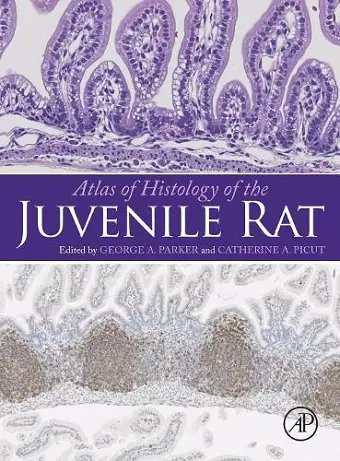Atlas of Histology of the Juvenile Rat
George A Parker editor Catherine A Picut editor
Format:Hardback
Publisher:Elsevier Science Publishing Co Inc
Published:27th May '16
Currently unavailable, and unfortunately no date known when it will be back

The definitive resource on the histomorphology of juvenile rats, including input from experienced board-certified toxicologic pathologists who cover organs typically sampled in nonclinical toxicology studies
Atlas of Histology of the Juvenile Rat should be of interest to toxicologic pathologists, toxicologists, and other biological scientists who are interested in the histomorphology of juvenile rats. For several decades the laboratory rat has been used extensively in nonclinical toxicology studies designed to detect potential human toxicity of drugs, agrochemicals, industrial chemicals, and environmental hazards. These studies traditionally have involved young adult rats that are 8-10 weeks of age as studies are started. It is becoming increasingly apparent that children and young animals may have different responses to drug/chemical exposures, therefore, regulatory agencies are emphasizing toxicology studies in juvenile animals. While the histologic features of organs from young adult and aged laboratory rats are well known, less is known about the histologic features of organs from juvenile rats. Final histologic maturity of many organs is achieved postnatally, thus immature histologic features must be distinguished from chemical- or drug-related effects. While this postnatal organ development is known to exist as a general concept, detailed information regarding postnatal histologic development is not readily available. The Atlas includes organs that are typically sampled in nonclinical toxicology studies and presents the histologic features at weekly intervals, starting at birth and extending through postnatal day 42.
"Although this atlas is an essential resource for the toxicological community, it is also relevant for pathologists, veterinarians, and anatomists because of the tremendous detail, precise terminology, and excellent images, along with historical and contemporary references." --Journal of the American Veterinary Medical Association "...an excellent reference to aid the pathologist in both proficiently recognizing distinguishing features of the juvenile rat compared to the adult and identifying possible developmental disturbances. This text will be useful to anyone interpreting pathology endpoints in studies using juvenile rats, whether in industrial or academic research." --Veterinary Pathology
ISBN: 9780128026823
Dimensions: unknown
Weight: 1450g
462 pages